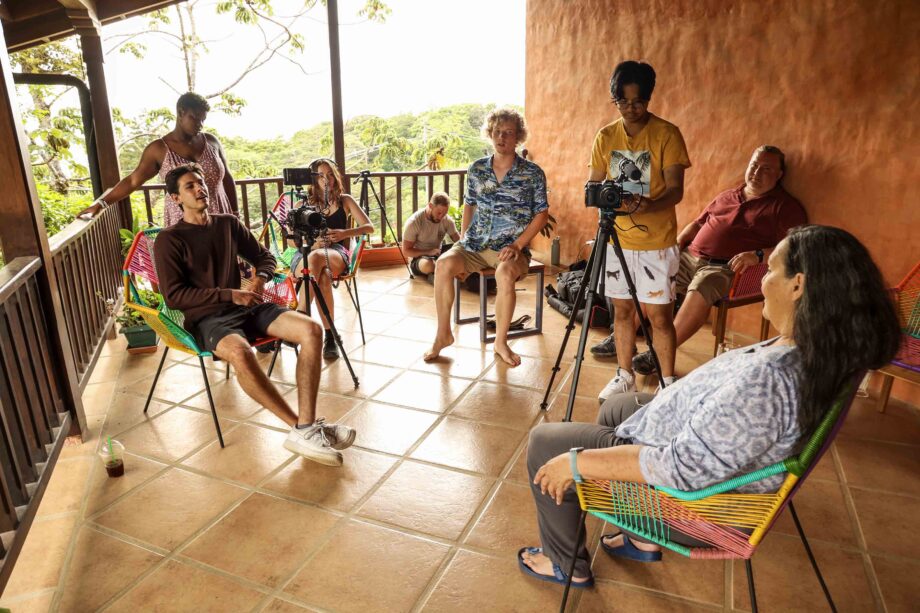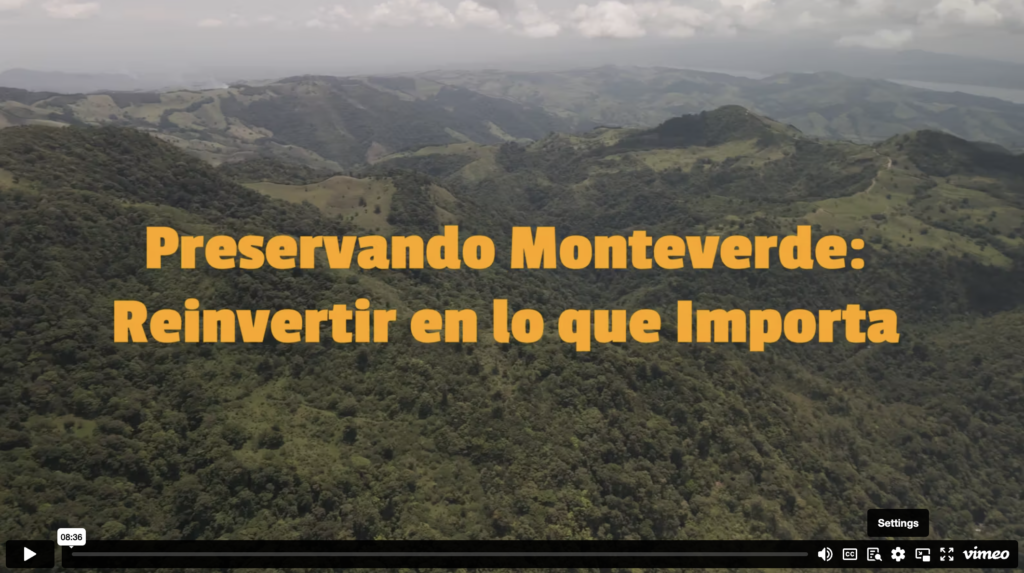ODU Field Study to Costa Rica (2024)
Wrap Report
In May 2024, a group of students from Old Dominion University embarked on a Field Study with Actuality Abroad in Costa Rica. For many, it was their first experience with documentary storytelling. They arrived in Monteverde eager to tackle the challenge of creating a short documentary film. With the breathtaking mountains as their backdrop, the students brought a spirit of adventure and curiosity that fueled their journey both on and off camera.
LOCATION
The Santa Elena and Monteverde region, nestled in the mountains of northeastern Costa Rica, is an emerging tourist destination known for its stunning nature reserves, rich biodiversity, and, to some, its renowned coffee.
Monteverde, perched high above much of the surrounding landscape, was first settled in the 1950s. A group of Quakers, escaping the draft in the United States, moved into the area and, by most accounts, worked closely with the few locals to build a strong, self-reliant community.
While the locals have mastered self-sufficiency, the growing influx of tourists—drawn by the elusive wildlife, unique biological studies, and adventure sports—requires support. Resources must be brought in to accommodate this development, leaving locals to either provide or go without.
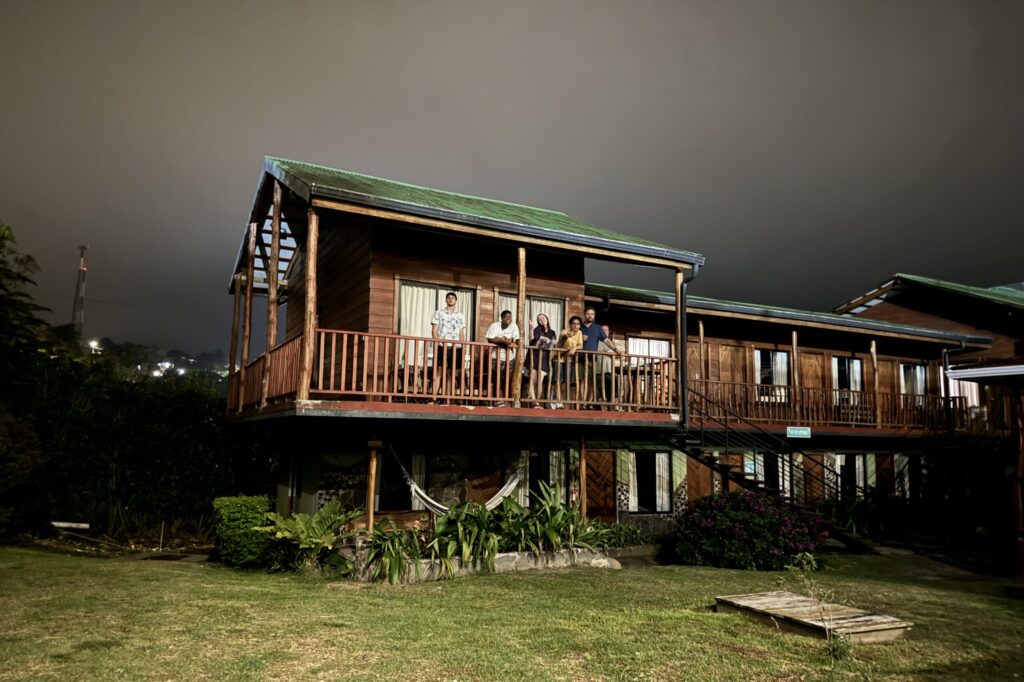
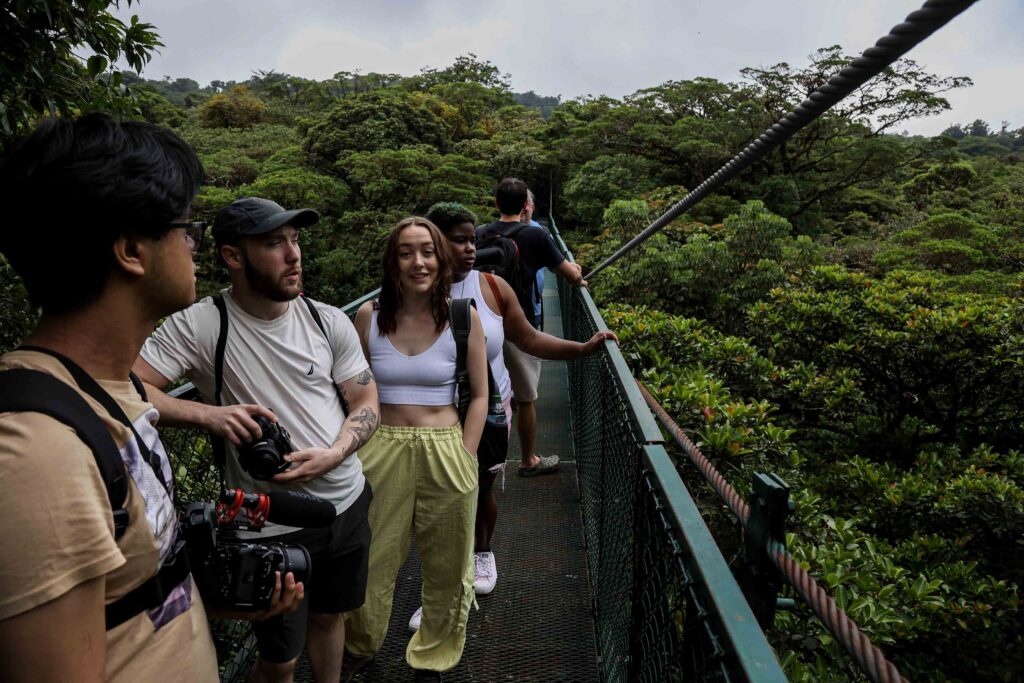
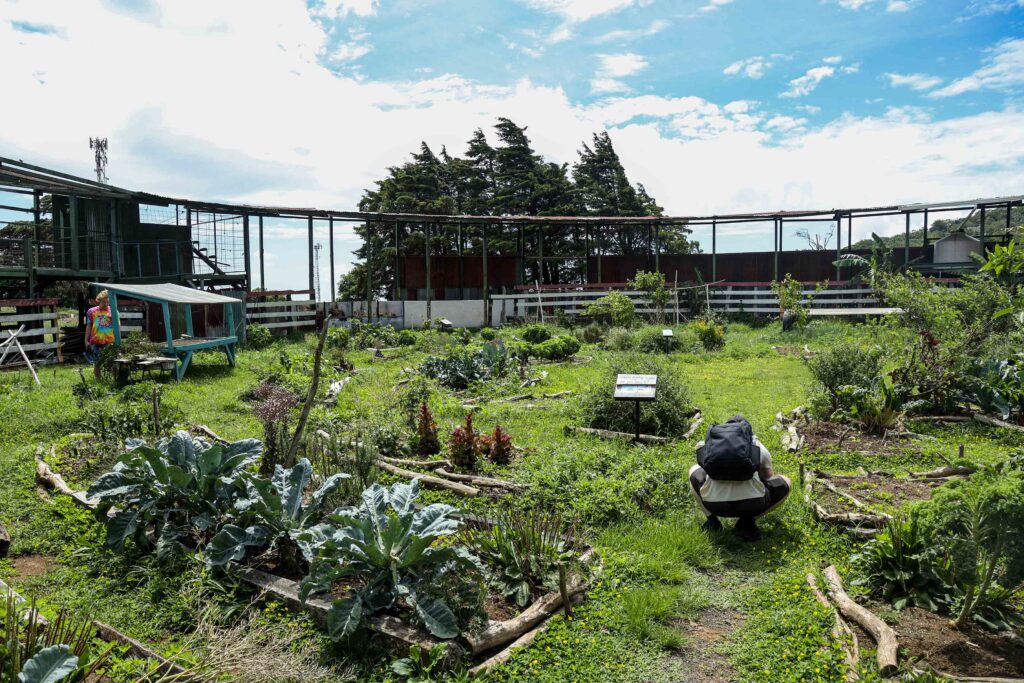
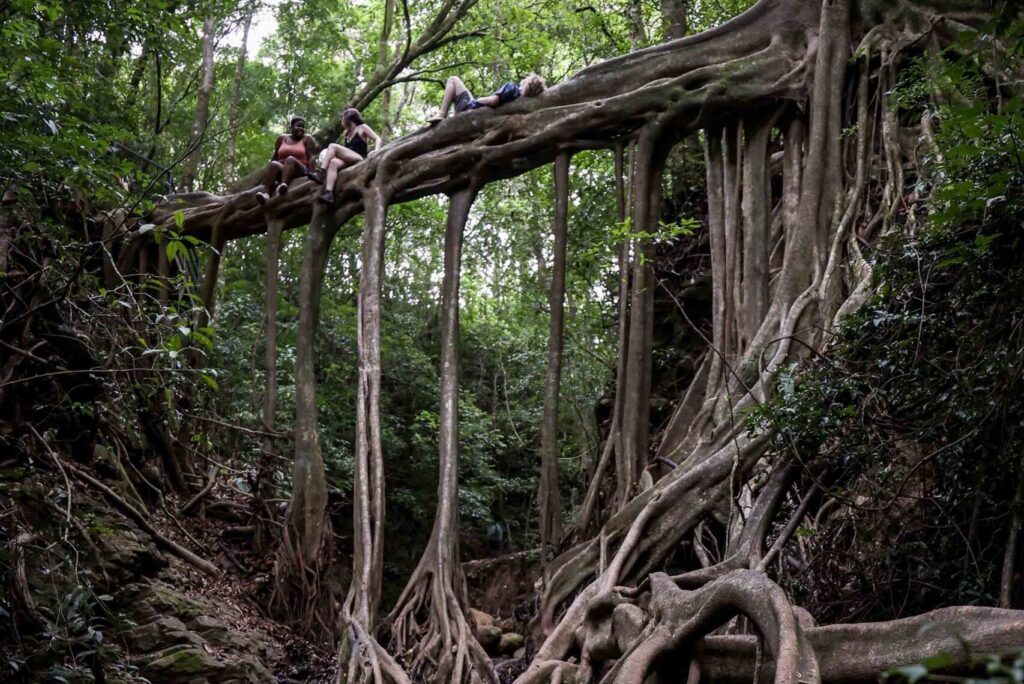
STORYTELLING PROJECTS
A driving force for positive change in the region, the Monteverde Community Fund operates from its offices in Santa Elena, serving as an incubator and support system for local projects that benefit the community. Each year, they accept applications for new initiatives, oversee a local library, and assist various organizations with legal paperwork and responsibilities that small groups often lack the capacity to manage.
The fund’s primary source of financial support comes from local coffee plantations, which donate a portion of their tour proceeds. This initiative was started by the coffee farmers themselves and is a story the Monteverde Community Fund is eager to share with the world.
During their research, the crew from Old Dominion University met with representatives from several local organizations—a theater group, a community center, and a community arts collective—hearing firsthand how partnering with the Monteverde Community Fund has positively impacted their efforts.
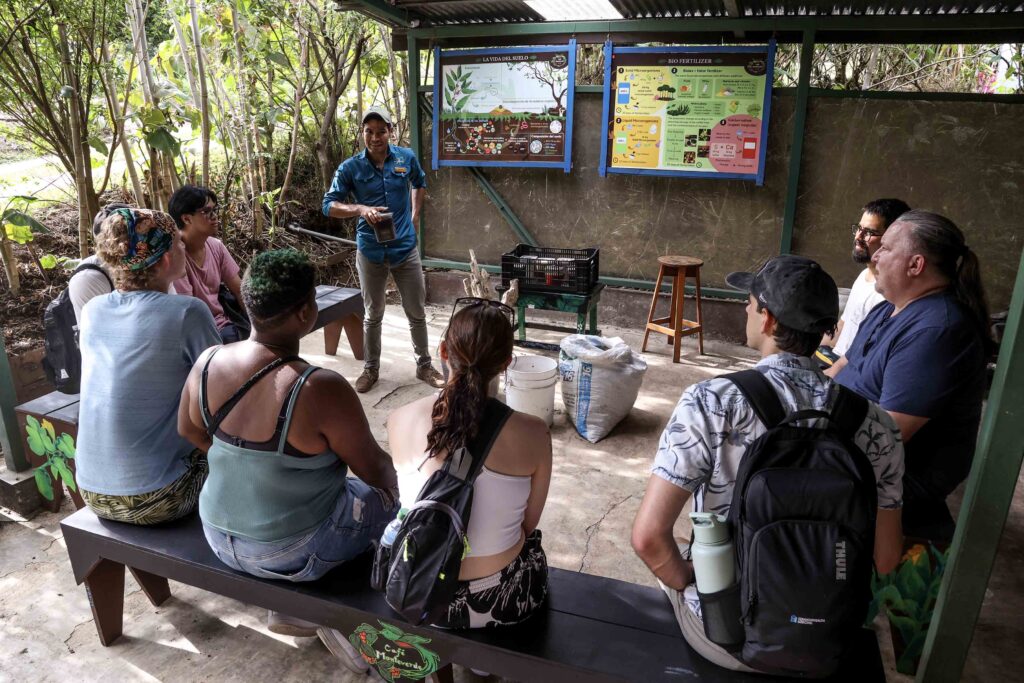
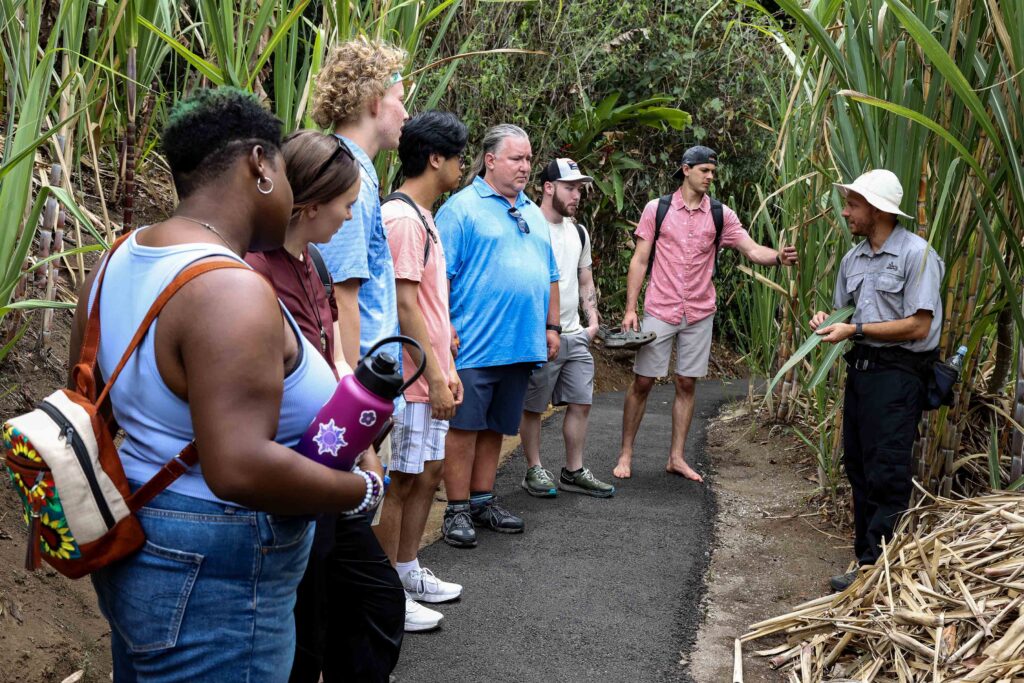
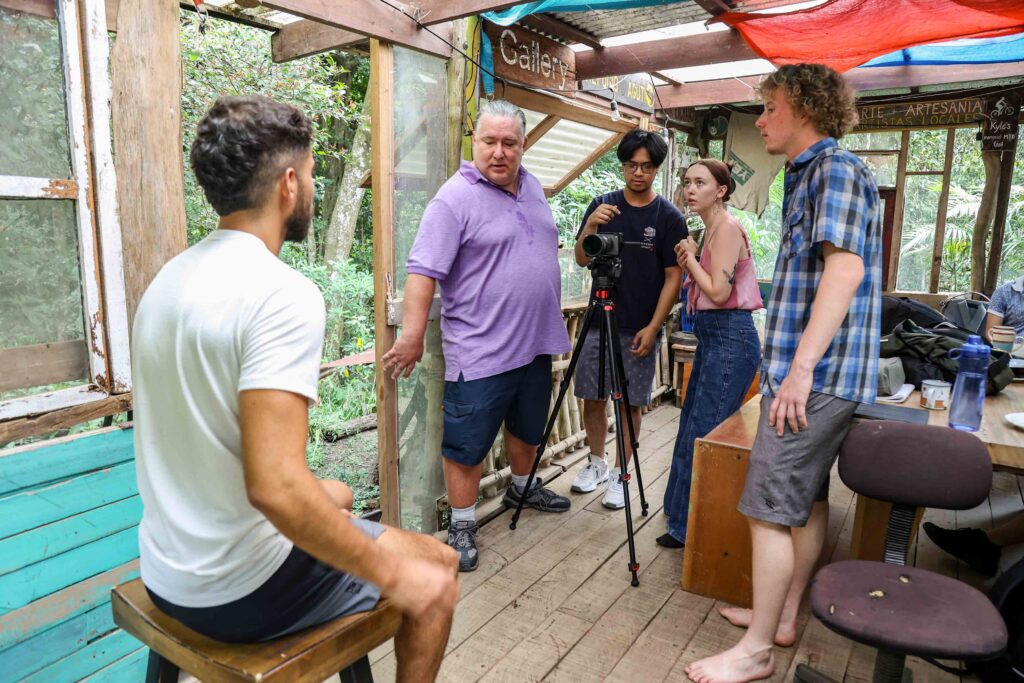
OLD DOMINION UNIVERSITY CREW
The Department of Communication and Theatre Arts at Old Dominion University has partnered with Actuality Abroad for two previous study abroad trips, both to Indonesia in the late 2010s. Each trip was led by Professor David Mallin, a cinematographer and director of ODU’s Film Program. With a core group of accomplished film students, Professor Mallin brings together a diverse group of students each year, guiding them through the storytelling process alongside Actuality Abroad to create impactful media.
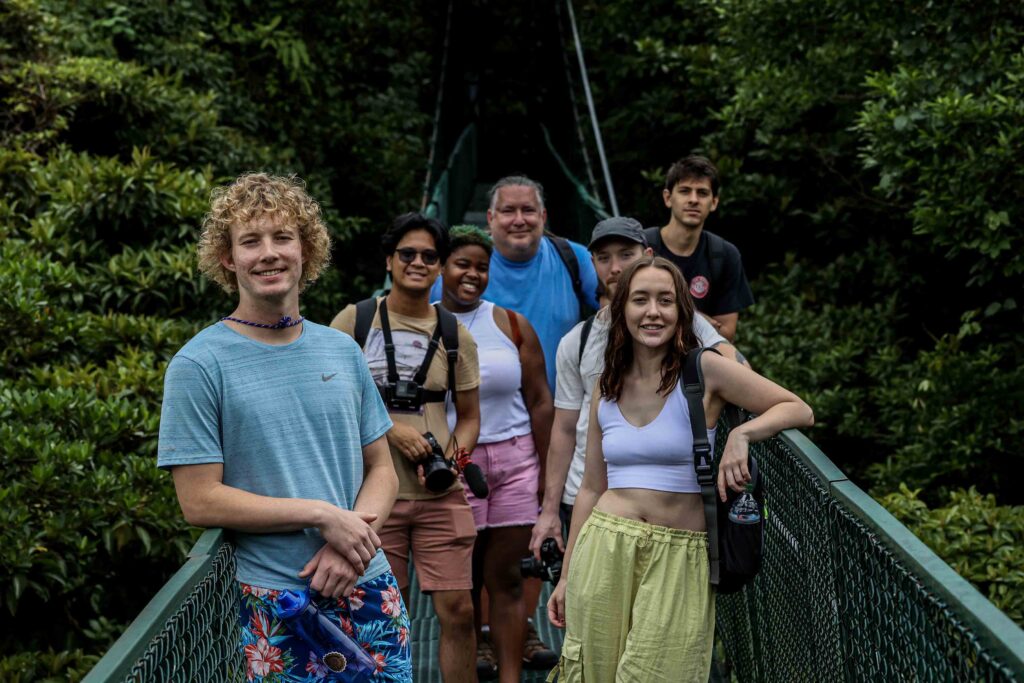
BRIEFINGS, RESEARCH AND PRODUCTION
Professor Mallin and his group of students arrived in San José, Costa Rica, fresh and ready for their adventure. With a long drive ahead to Santa Elena, the first few hours were spent gazing out of the van windows, marveling at the passing landscapes. Fortunately, a few breaks were built into the journey, allowing the group to stretch, explore, and dive into their surroundings with enthusiasm.
The first few days in Costa Rica were a whirlwind of activity, as the students quickly immersed themselves in research. Led by an Actuality Field Guide, they participated in Briefings at base camp—focused lessons on the key aspects of documentary filmmaking and storytelling that would shape their project.
In addition to the lessons, the crew held regular meetings with the Monteverde Community Fund and conducted site visits to local coffee farms, knowing the story of their film would begin there.
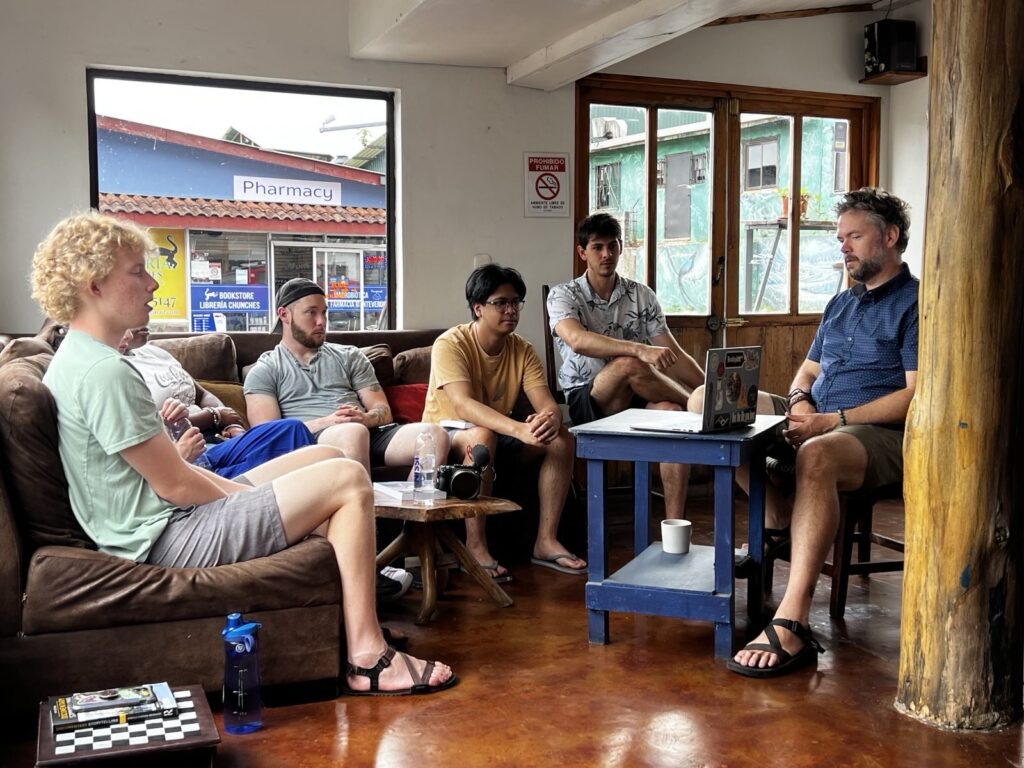
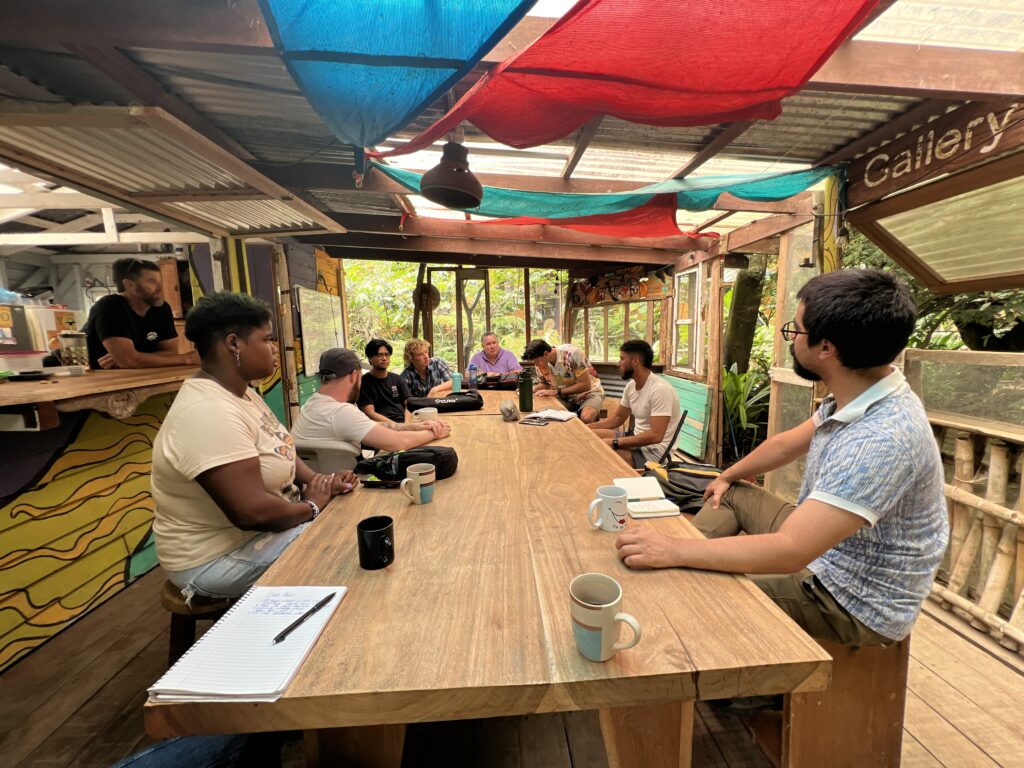
The walk between Monteverde and Santa Elena takes about 45 minutes, and along the way, there are countless nature trails waiting to be explored. The ODU students quickly embraced their surroundings, setting off into the forests and mountains. Their weekend adventures grew bolder with each outing—rappelling down waterfalls on a canyoning trip, ziplining the next, and capping off the final weekend with a six-mile waterfall hike.
But the students worked just as hard on their documentary as they did on their outdoor adventures. The story for their film began to take shape as they met with local leaders involved with the Monteverde Community Fund. By the end of the second week, with their Briefings complete, the students had honed in on the right story. After presenting their ideas to the Community Fund members for feedback and approval, the crew moved forward with planning and filming.
Their first project was a short documentary with the local theater group, Far Corners, designed to help the crew get comfortable working together on set while also supporting a local organization. They later revisited Far Corners for a follow-up interview and rehearsal footage, incorporating elements of the theater group’s story into their main film.
At the Riochante community center, the crew gained insight into the challenges of an isolated town struggling with the influx of new residents and tourists. They learned how the Community Fund helped Riochante foster a sense of unity and create spaces for gathering. For both Far Corners and Riochante, the students sifted through archival footage, selecting key moments to help illustrate the backstory for their documentary.
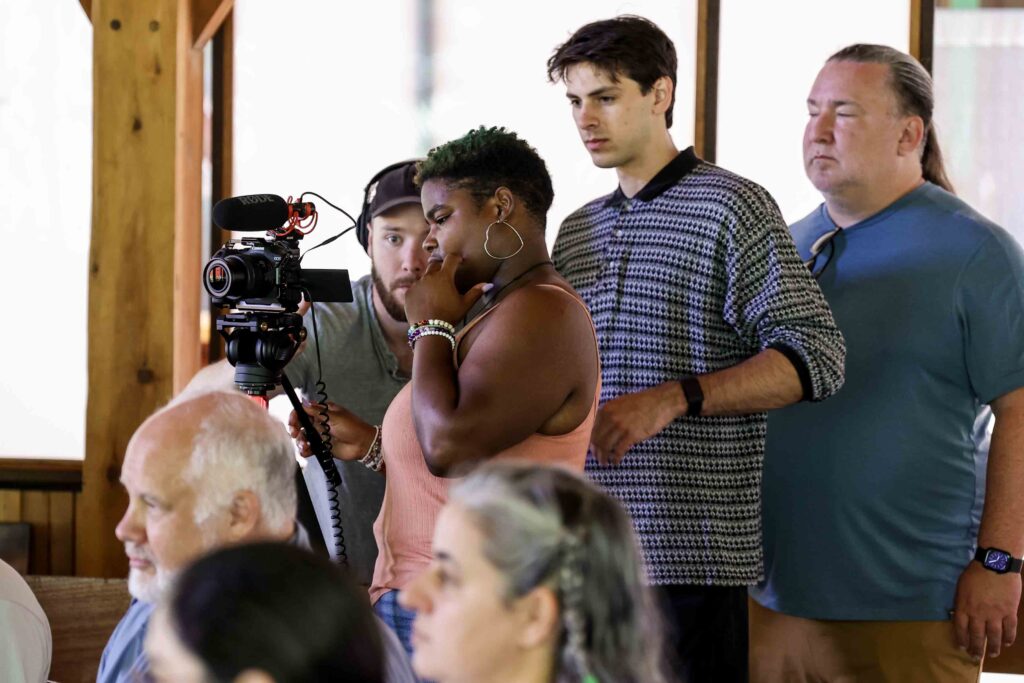
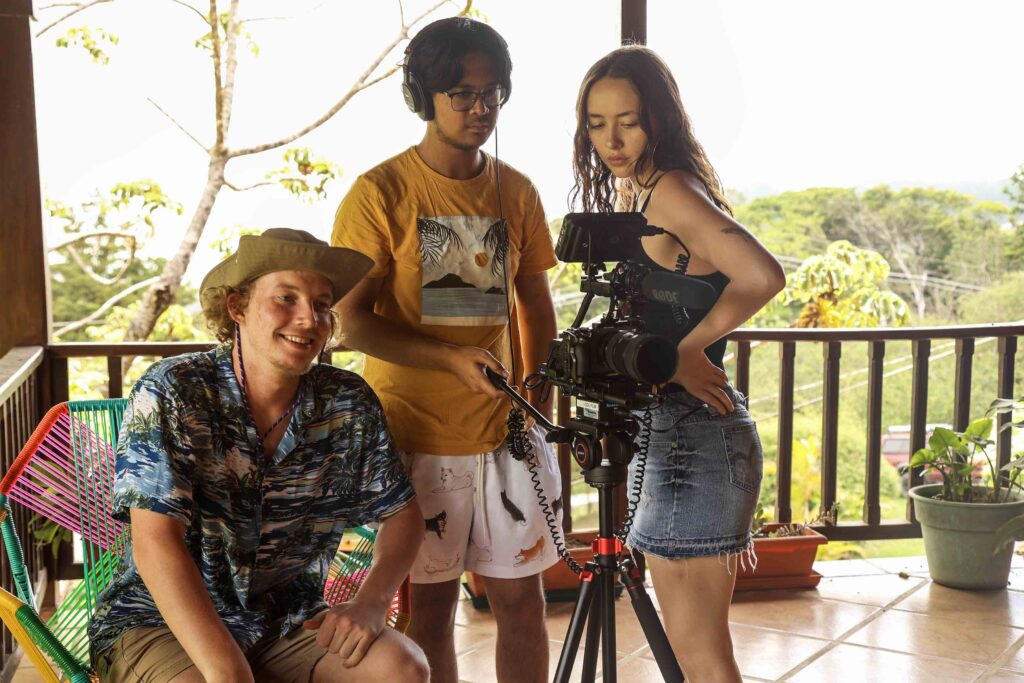
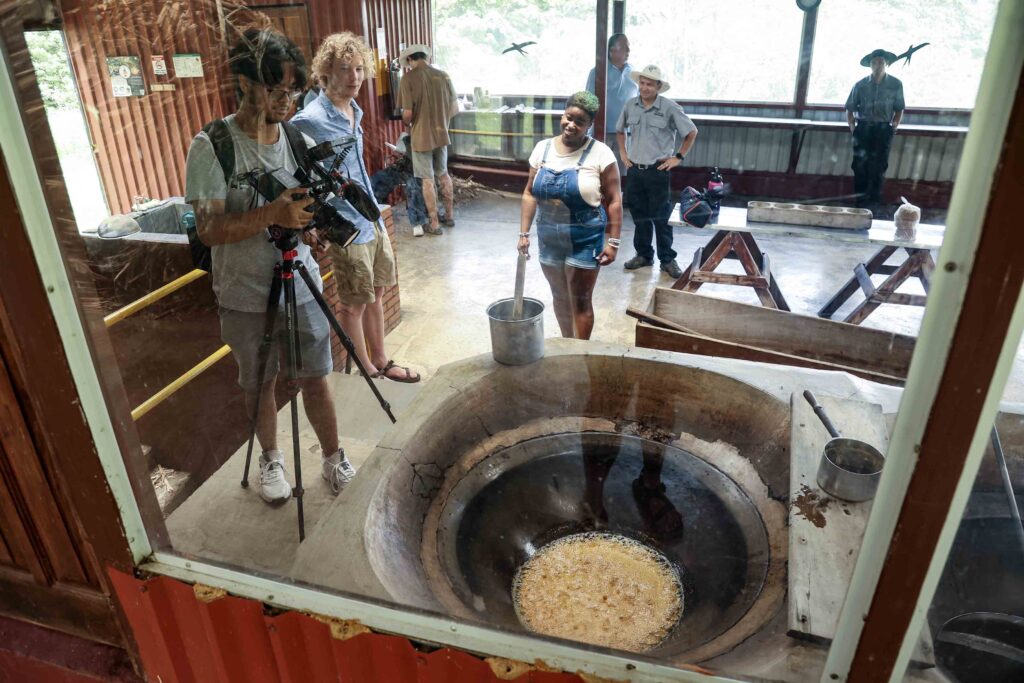
By the third week, the students split into two crews to capture the remaining footage. Some ventured to the coffee plantations to film, while others stayed in Santa Elena, gathering shots to showcase the town. Our Field Guide also provided drone footage of the area, adding an aerial perspective to the final piece.
The crews wrapped up production with two key interviews: Ricardo from the Monteverde Community Fund and Luis from El Trapiche Coffee Plantation. With these insightful interviews and a wealth of footage, the team had everything they needed for their film—now it was time to put it all together.
Back at base camp, the students spent long days editing their project. They balanced the intense workload with self-care breaks—yoga sessions at the hotel, dinners around town, and peaceful walks through the forest. But each time, they regrouped to continue their work. By the end of the Field Study, the crew had a rough cut of their documentary, ready to present to the Community Fund for final feedback.
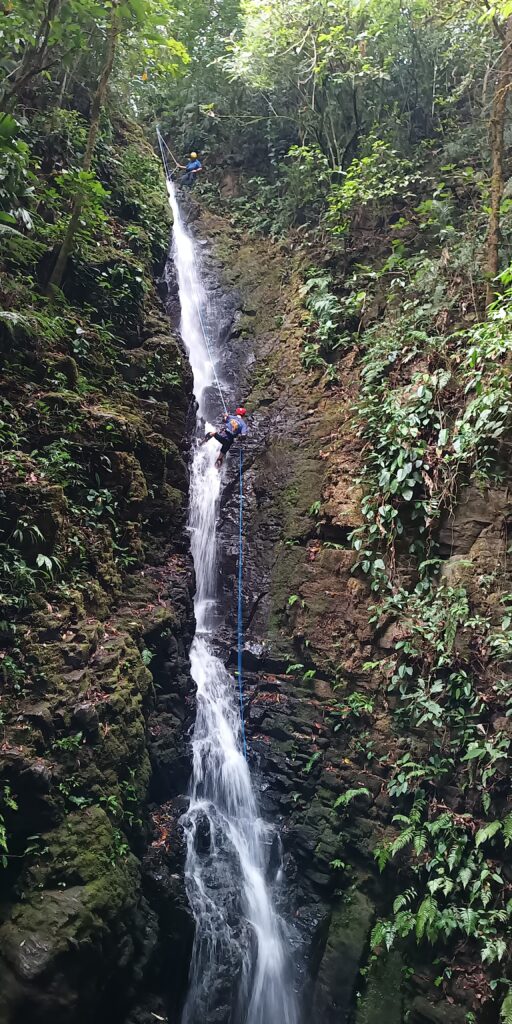
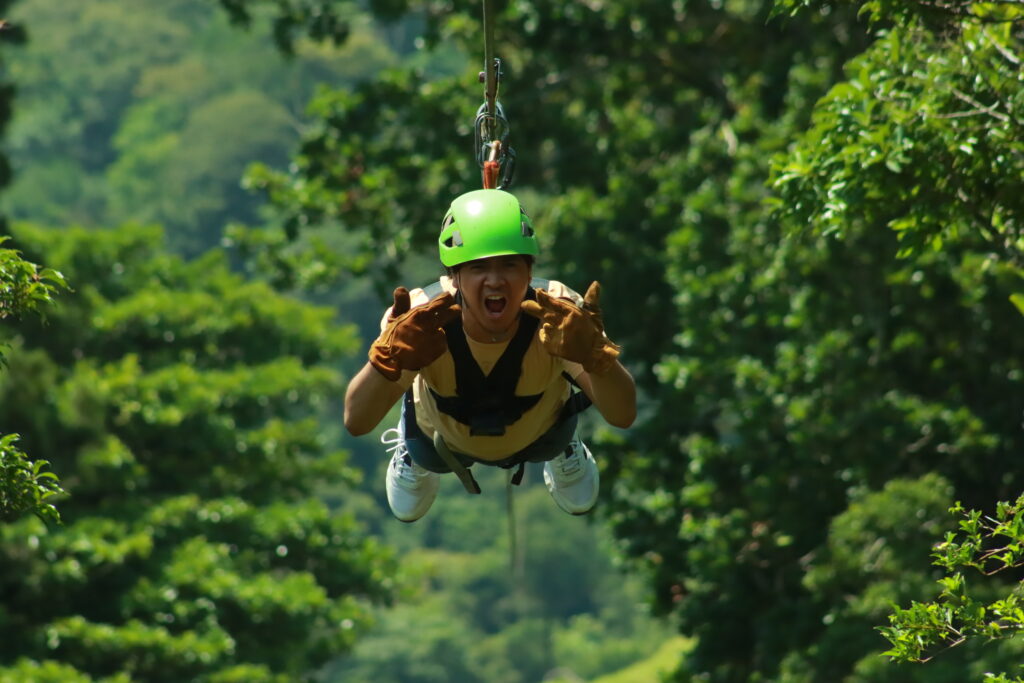
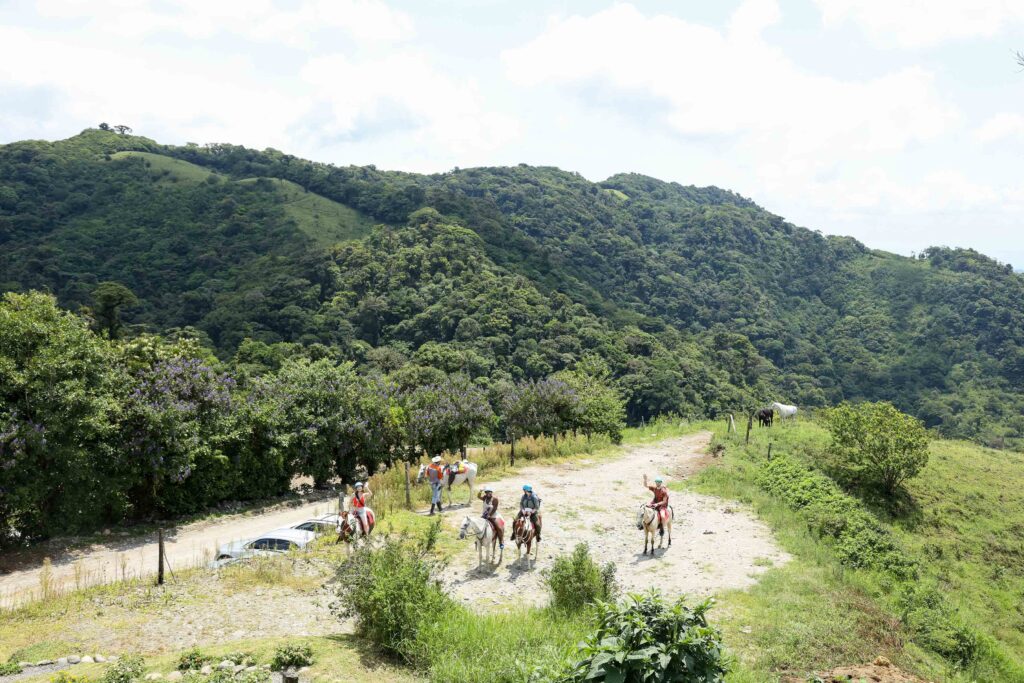
With the assurance that their project was on the right track, the crew celebrated their final weekend in Costa Rica with a series of fun adventures. At their Farewell Dinner, they shared favorite memories from their time in the country before packing up for the journey home. The next morning, they boarded the van to San José, ready to head back to Virginia.
Once back home, the students had time to rest and recharge before diving into meetings—both online and in person—to complete their film. Within a few weeks, they had both their micro-documentary and their main film finished and available for the world to see.
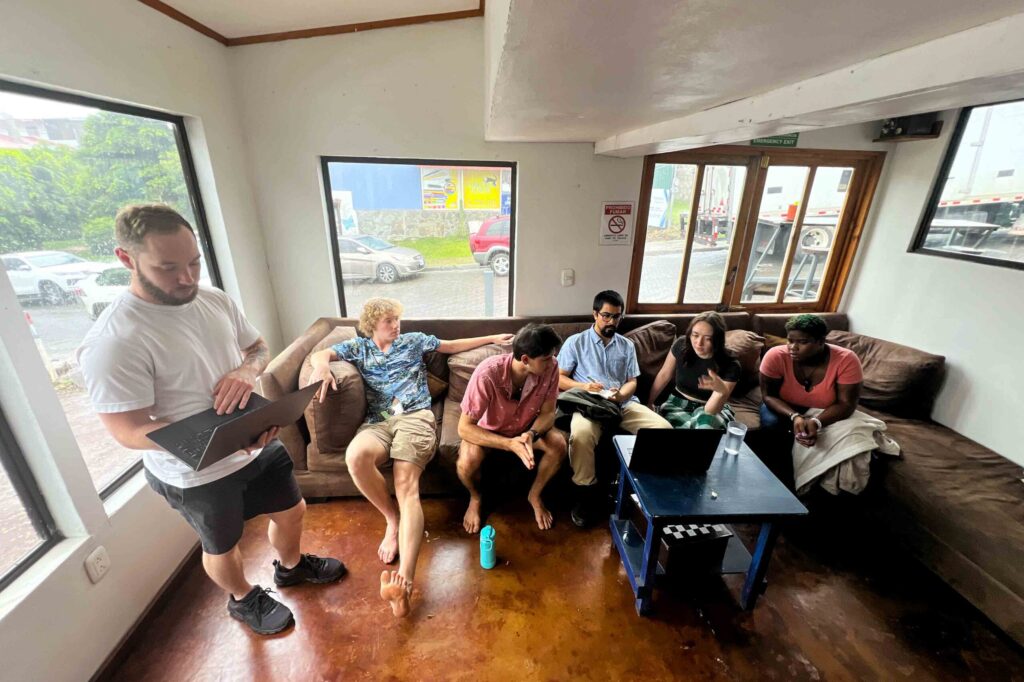
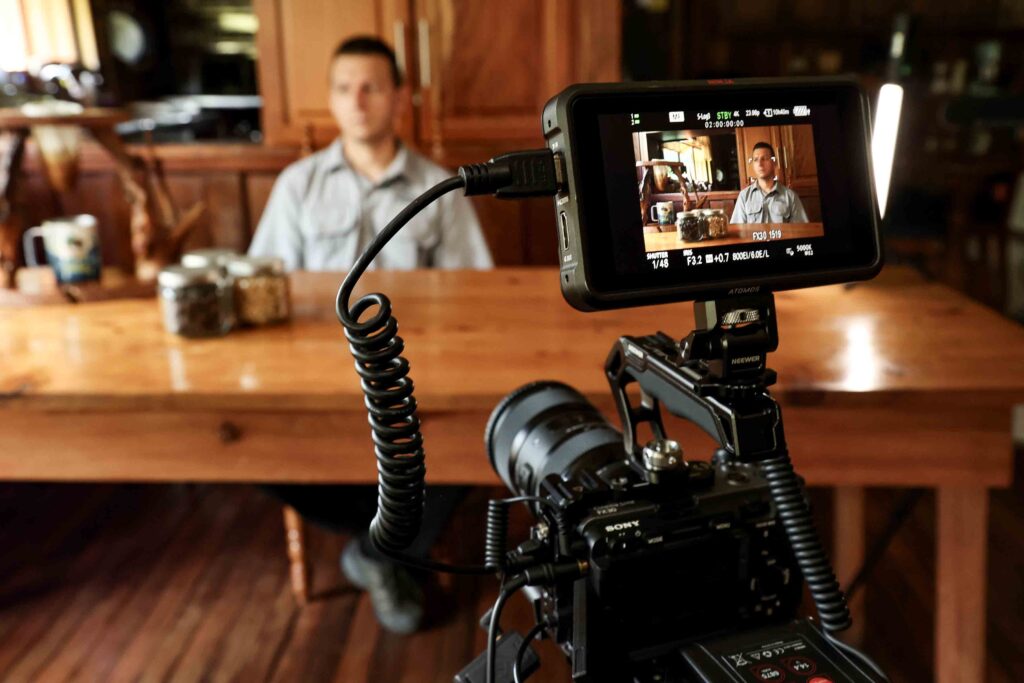
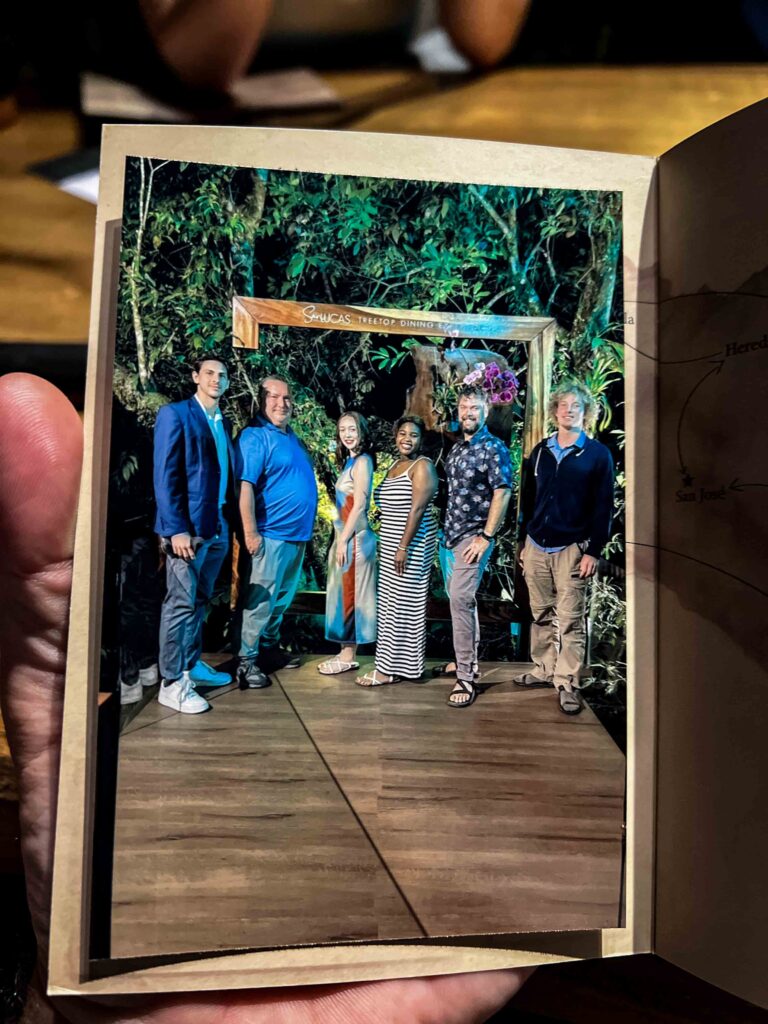
CREW EXPERIENCE
My Actuality Abroad experience was cultivated through my university’s study abroad program. So my expectations were blown away with Robin's presence and facilitation of our class's experience. What worked well for me on this study abroad was the process and method that Actuality Abroad used to introduce film noobs to documentary filmmaking. I had little background and now i feel empowered to tell more stories back home.
brett darlington, co-director, preservando monteverde
The group was not a majority of film majors, but each of us found a position that made our team work seamlessly.Traveling with Actuality Abroad was transformative and inspiring. Thank you so much!
DANIEL SMITH. SOUND. PRESERVANDO MONTEVERDE.
It was a great experience to explore and get involved with another culture and community. While we maintained a strong work ethic, we still managed to find time to enjoy the attractions in the area and broaden our horizons.
justin brinkley, co-editor, preservando monteverde

